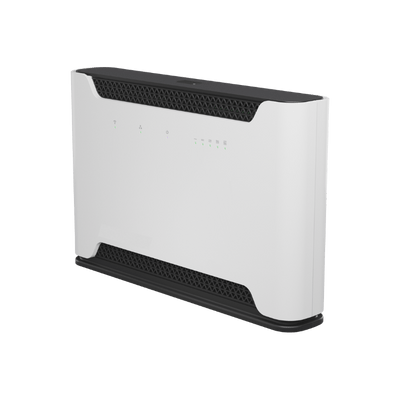In the world of wireless connections, there are two main frequencies that are used to connect devices: 2.4GHz and 5GHz. Both of these frequencies have their own advantages and disadvantages, and understanding the differences between them can help you maximize your network performance.
What is 2.4GHz?
2.4GHz is the most common frequency used for wireless connections, and is the frequency used by most Bluetooth devices, garage door openers, and baby monitors. It has a longer range than 5GHz, but is more susceptible to interference from solid objects and other devices.
This means that if you have multiple devices connected to your 2.4GHz network, you may experience network congestion and slower speeds.
What is 5GHz?
5GHz is the newer frequency, and is becoming increasingly popular as more devices are able to connect to it. It has a shorter range than 2.4GHz, but is less susceptible to interference from other devices.
This means that if you have fewer devices connected to your 5GHz network, you can maximize your network performance and get faster speeds. Additionally, dual band routers are available that allow you to connect to both 2.4GHz and 5GHz frequencies, so you can connect to the frequency that best suits your needs.
What's the best option for connecting multiple devices?
Understanding the differences between 2.4GHz and 5GHz WiFi can help you choose the best frequency for your wireless connections and maximize your network performance. With the right wireless router and the right frequency, you can ensure that your devices have stable connections and faster speeds.
When it comes to connecting multiple devices to a WiFi network, a dual band router is the best option. This type of router allows you to connect devices to both the 2.4GHz and 5GHz frequencies.
This allows you to maximize network performance by connecting fewer devices to the 2.4GHz frequency, while connecting high bandwidth devices to the 5GHz frequency. This will help to reduce network congestion and provide a more stable connection for devices such as baby monitors and other wireless connections.
How Solid Objects Impact WiFi Connections
WiFi connections are an essential part of our lives, but they can be affected by a variety of factors. One of the most common issues is the impact of solid objects on the connection.
How is 2.4GHz WiFi affected?
Solid objects pose a significant challenge to 2.4GHz WiFi connections. Unlike the 5GHz frequency, the 2.4GHz frequency is more prone to interference from physical barriers such as walls, floors, and furniture.
These objects can absorb or reflect the radio waves, reducing the signal strength and subsequently affecting the speed and quality of the connection. This susceptibility is due to the longer wavelength of 2.4GHz signals which, although provides a greater range, also increases the chances of encountering obstacles.
Therefore, for a reliable and consistent wireless experience with a 2.4GHz network, it is important to minimize the number of solid objects between the wireless router and the device.
How is 5GHz WiFi affected?
5GHz WiFi is a newer frequency that is becoming more popular. It is less likely to be disrupted by solid objects, and it can provide faster speeds and a more stable connection.
However, it is not compatible with all devices, and it can only support a limited number of devices connected to the network. To maximize network performance, it is best to use a dual band router that supports both 2.4GHz and 5GHz WiFi frequencies. This will allow you to connect multiple devices to the network while still providing a more stable connection and faster speeds.
Overview
In conclusion, understanding the difference between 2.4GHz and 5GHz WiFi is essential for maximizing network performance and ensuring a stable connection. Dual band routers are the best way to ensure that all of your wireless devices are connected to the right frequency band, allowing you to maximize speed and range while reducing network congestion.
With the right router and a few simple tips, you can ensure that your wireless devices are connected to the best frequency band for maximum performance.
FAQs
What is the difference between 2.4GHz and 5GHz WiFi?
The main difference between 2.4GHz and 5GHz WiFi is the frequency band that they operate on. 2.4GHz WiFi operates on the 2.4GHz frequency band, while 5GHz WiFi operates on the 5GHz frequency band. The 5GHz frequency band is able to provide faster speeds and a more stable connection than the 2.4GHz frequency band.
How do solid objects impact WiFi connections?
Solid objects such as walls, furniture, and other obstructions can have a significant impact on WiFi connections. These objects can block or weaken the signal, resulting in slower speeds and a less reliable connection.
Can Bluetooth devices impact my WiFi connection?
Bluetooth devices can interfere with WiFi connections, as they both operate on the same frequency band. This can result in slower speeds and a less reliable connection.
How can I maximize network performance with a dual band router?
A dual band router allows you to connect to both the 2.4GHz and 5GHz frequency bands, allowing you to take advantage of the faster speeds and more stable connection of the 5GHz frequency band. This can help to maximize network performance.





